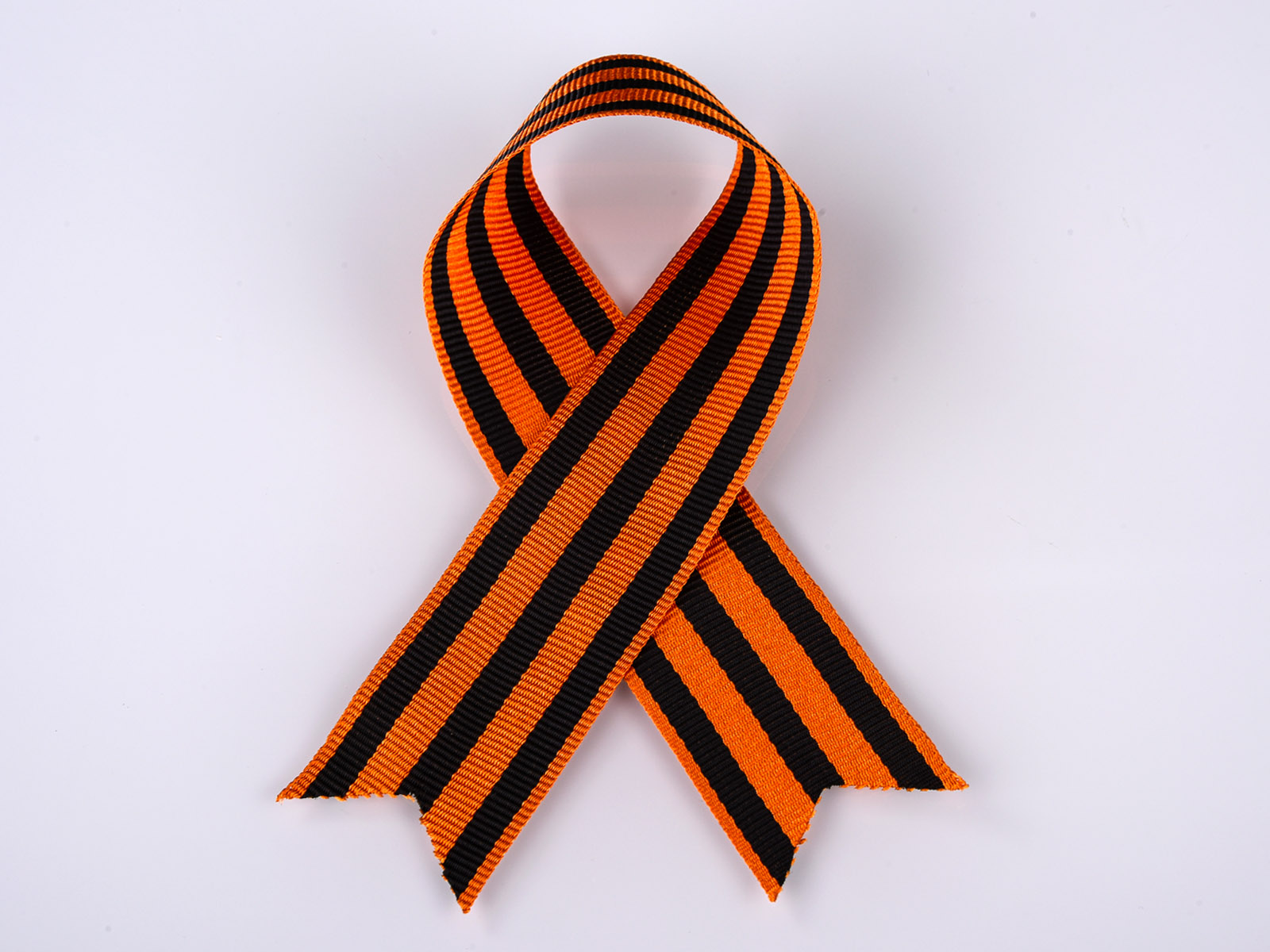The history of St. George ribbons is well known. The Order of St. George was established in 1769 to reward Russian soldiers during the war with Turkey. Later, in the Soviet Union, it was abolished, but in 2000, Russia restored it.
The Guards ribbon was established in 1942 to denote guard units, formations, and ships that showed heroism in battles against the fascists. Visually, it strongly resembled the St. George ribbon, but instead of yellow stripes, it used orange ones.
Why has there been a real war between supporters and opponents of striped ribbons?
In my opinion, there has been a confusion of concepts.
There is a segment of Russian citizens who, under the influence of Kremlin propaganda in recent years, have developed a sense of grandeur. They consider themselves the continuers of the Russian tsars’ mission of gathering Russian lands and creators of the “Russian world.” These people support the annexation of Crimea and other “primordially Russian lands” to Russia. It was for their sake that during the separatist war in Ukraine in 2014, Russian propagandists used the St. George ribbon as a symbol of the “greatness of the Russian empire.” I believe it was used deliberately because many citizens of the former Soviet Union associated it with the Guards ribbon, i.e., with heroism in the fight against fascism. The leitmotif of Russian propagandists was that Ukrainian separatists were supposedly fighting against “Ukrainian fascists oppressing Russian-speaking citizens.”
I think it is this cunning move by Kremlin ideologists that is to blame for the current confusion with ribbons in Russia and all the former Soviet republics.
Some people exalt the St. George ribbon as a symbol of Russia’s greatness.
Another segment of people honors the Guards ribbon as a tribute to the heroes-guardsmen who gave their lives in the war against fascism.
And since these ribbons look similar, the third segment of people, who are very protective of the independence of their young state, view all wearers of striped ribbons as imperialists.
However, I assure you this is not the case.
I have seen many people who are patriots of Kazakhstan and have absolutely nothing to do with the “Russian world,” but want to honor the memory of their fallen grandfathers by wearing the familiar Guards ribbons from Soviet times. These people are puzzled by why they are so fiercely hated by Kazakh national patriots. After all, respect for the heroism of the defenders of the Fatherland has not been canceled.
Kremlin ideologists have achieved their goal. Under the guise of striped ribbons, they have split the societies of several countries into two parts. Due to the similarity of the St. George and Guards ribbons, they have managed to win over a large portion of the population.
What to do now?
The motivation of Kazakh national patriots is understandable. To avoid confusing normal people with imperialists, they propose abandoning the Guards ribbons, which so inconveniently resemble the St. George ribbons, and exclusively wearing their own turquoise ones. In other words, they propose honoring the memory of hero-grandfathers in such a way that there are no associations with imperialists.
They might be countered with: “We are used to the striped ribbons and do not want to give them up just because they now associate with the St. George ribbons for some.” To this, there is a reply: “At one time, the Indian swastika symbolized luck and prosperity. But since it was used by Nazi Germany, it is foolish to wear it and prove to everyone that it is merely an ancient Indian symbol of prosperity.”
I am personally skeptical of the excessive attention to symbols. I prefer to focus on meaning. But considering all the above, I lean more towards the opponents of striped ribbons. Since they have been appropriated and defiled by great-power chauvinists, it is wiser for everyone else to abandon the striped ribbons and adopt new symbols.
4o

COMMENTS